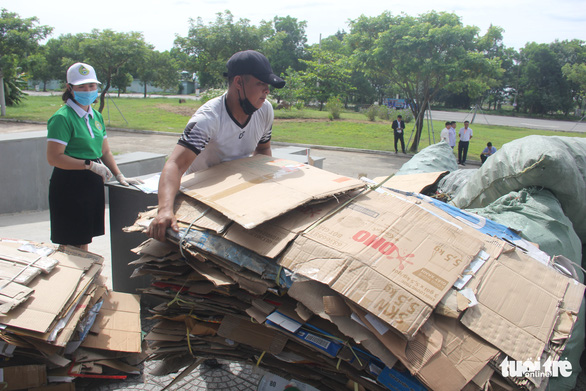As many as 102 landfills in the entire central and Central Highlands regions of Vietnam are mainly open-air dumps that fail to meet hygiene standards, experts told a seminar held in Da Nang City on Thursday.
The figure, accounting for more than half of a total of 173 landfills existing in the two regions, took many seminar attendees aback.
Environment companies mainly sprayed these landfills with bioproducts for odor and insect control or with lime for disinfection, but have not yet invested in standard waste, gas, and leachate treatment systems.
Pham Hong Son, director of the Central and Central Highlands Environmental Protection Department, attributed the issue to the lack of funds and technology.
Urban areas have seen an increase of 10-16 percent in daily-life solid waste volume per year, according to Son.
Burial remains a major treatment method as 70 percent of the municipal solid waste is buried at landfills.
However, only about 20 percent of those landfills meet environmental standards.
Nationwide, 71 percent of solid waste is buried, according to the Ministry of Natural Resources and Environment’s statistics.
Sixteen percent is treated by composting, a biological process in which the organic portion of refuse is allowed to decompose under carefully controlled conditions.
Another method of treating solid waste is burning, making up 13 percent.
However, the technology used in the aforementioned modes is generally outdated and inconsistent, according to Son.
At the seminar, many delegates pointed out a lack of efforts in research activities on technology to treat, recycle, and reuse waste in order to maximize their value.
Like us on Facebook or follow us on Twitter to get the latest news about Vietnam!



















































